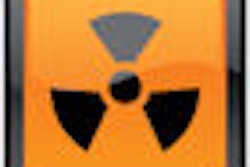Radiation oncologists should be less concerned about late-onset radiation dose toxicities when planning palliative radiation therapy protocols for near-death cancer patients, according to a study published online today in Cancer.
Radiation oncologists at Düsseldorf University Hospital in Germany suggested that end-stage cancer patients needing palliative radiation therapy to relieve pain might be better off with single-session treatments rather than multiple hypofractionated courses that are more difficult for patients to complete.
The researchers studied 33 patients among a group of 216 receiving palliative radiotherapy at the hospital between December 2003 and June 2004, who had enrolled in a prospective study evaluating physicians' ability to predict survival relative to clinical prognostic factors, performance status, laboratory tests, and distress scores. The study showed that physicians' survival estimates were overly optimistic, regardless of their professional experience, and prognostic errors were inversely correlated with survival (2007, Journal of Clinical Oncology, Vol. 25:22, pp. 3313-3320).
Thirty-one of the 33 patients had at least one metastasis, located in the brain (36%), bone (24%), or lungs (18%). Thirty of the patients had a Karnofsky performance status score of less than 50, and many of these patients also had lactate dehydrogenase, dyspnea, and leukocytosis. Two-thirds were bedridden at the time of their initial consultation.
A team of physicians with varying levels of experience predicted that five patients would die within 30 days, 21 would die within 30 to 180 days, and seven had the potential to live longer than six months. Standard or slightly hypofractionated treatments of 2- to 3-Gy fractions with a total dose of 30 to 40 Gy scheduled predominantly over a two- to three-week time span were prescribed for 31 patients.
However, among the 31 patients who began palliative radiation therapy, the treatment was ineffective for 16 patients, whose pain worsened. Seven patients died while having the treatment, and another 10 did not complete the treatment. Only 58% completed their treatment.
Ultimately, only eight patients benefited, with an improvement in symptoms. Yet more than half of the patients spent more than 60% of their remaining life having radiotherapy treatments.
Radiation oncologist Dr. Stephan Gripp, the study's principal investigator, and colleagues suggested that single-fraction radiation therapy may be more appropriate, from the perspective of providing treatment that can be completed and by reducing the number of hospital visits at a time when patients may find it difficult to travel or be moved.
By Cynthia E. Keen
AuntMinnie.com staff writer
April 12, 2010
Related Reading
Whole-brain radiation for mets may be ineffective, September 24, 2009
Physicians overestimate benefits of palliative whole-brain radiotherapy, September 23, 2008
Copyright © 2010 AuntMinnie.com



















